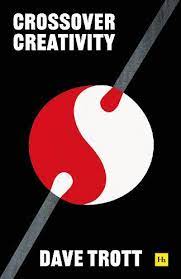The One Sentence Summary
Ideas don’t come from nothing – they come from what is already inside people’s brains, so the more you read, watch and observe, the more fuel you will have for ideas.
Can’t be bothered to read it? Listen to the 5-minute podcast in 2 parts.
Want to buy the book? CLICK HERE
WHAT THE BOOK SAYS 
- It’s not true to say that people have ideas. In fact, ideas have people. Being observant and interested makes you more likely to make connections and have interesting thoughts.
- Consider a Venn diagram – either extreme on its own is boring, ordinary and predictable. But moving the extremes together so they overlap and that creates the electricity where the magic happens – a new, third thing. That’s crossover creativity.
- The book contains a series of real-life stories that shed light on where creativity comes from. Areas dealt with include:
-
- Letting ideas in (to your thinking).
- When ordinary is (actually) extraordinary.
- Don’t look where everyone else is looking.
- Where ideas begin and who decides what an idea is.
- A great idea doesn’t care who has it.
- How to put ideas into words.
- Other provocations on the way include:
-
- Equal doesn’t mean the same.
- The answer can ask the question.
- Intelligence alone isn’t creative.
- Desperation can lead to clarity.
- There can be no opportunity without a problem.
- You don’t win just by going faster.
- There’s no such thing as a right brief.
- Reality isn’t perfect.
- The average is not the majority.
- Words beat data.
- Simplicity works, complexity doesn’t.
- Everything has a value if you look.
- Never stop questioning.
- Don’t look for agreement.
- Many great creative people have a magpie tendency – a wall or drawer full of great techniques based on the “Don’t throw that away” They know that they will come in useful one day when applied to the right brief or issue.
- Just because someone has been doing something a certain way for years doesn’t mean it’s the right way. It might actually be wrong.
- Don’t go with the flow. If a brief doesn’t make sense, you need to stand up and say so. You can keep quiet and hope we don’t look stupid or question it and say what everyone is thinking but too scared to say.
- People don’t like telling you things, but they love to contradict you. So they often only mention helpful information that should have been in the brief after you have done the work. Not helpful.
- You never know where an idea is coming from because ideas are new combinations. It’s no good looking in lectures or books or art galleries for inspiration. They are just places where the creativity has been pre-digested for you to look at.
- Many people believe that their subjective opinion is the only objective reality, but it isn’t, and they are missing the point. When they get on their high horse about details, they are going straight to the heart of the trivia. We can’t own knowledge.
WHAT’S GOOD ABOUT IT
- Every one of these points is dramatized by a short anecdote from real life. There are too many to narrate here but, as ever for this author, they make for a fast, poignant read.
WHAT YOU HAVE TO WATCH
- Anyone can pick up inspiration here about how to be more creative.
